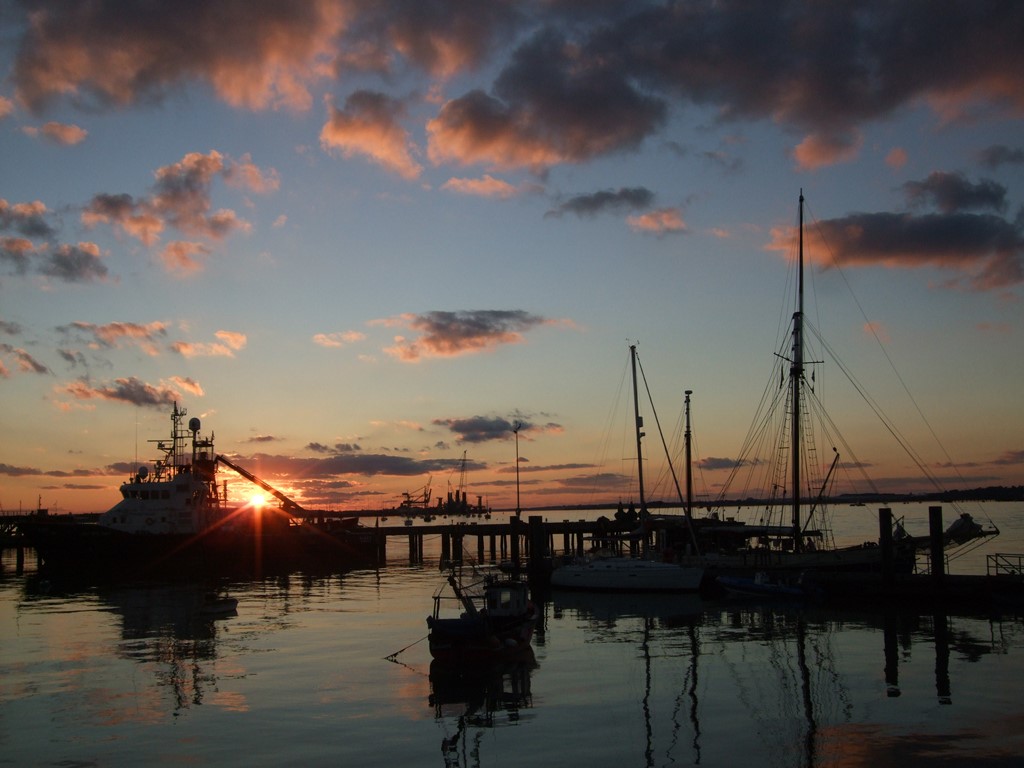First a disclaimer. Over the years I’ve written more about the Essex coastline than any other, apart from Kent, where I was born. It’s a surprising county that rewards visitors in a way that more hyped places can sometimes disappoint.
This rather romantic coast is for those who are drawn to estuaries, mudflats and marshes; and inland its hills and ancient woods rival almost anywhere. Snaking through 81 miles of such scenery is the Essex Way, which begins at Epping Forest and ends in the port of Harwich (above pic).
We decide to walk the last 16 or so miles of the Way, picking up the path in Mistley, near the mainline station of Manningtree (1 hour from Liverpool Street direct). It’s there, on a grey Friday afternoon, that we meet my dad and stroll its ancient streets, whose many older buildings bear Georgian facades. At the Crown, a 17th Century pub overlooking the Stour, we tuck into a smoked fish ploughman’s.
A mile-long waterside stretch called The Walls, a tourist spot in the summer, takes us from Manningtree to wealthy Mistley, with its pastel cottages, quay and malting industry. Today we’re relaxing before the walk begins tomorrow, and admire its neo-classical Mistley Towers, designed in 1776 as part of a church by Robert Adam, an architect commissioned to turn Mistley into a seawater spa.
Yet the proposed spa never happened beyond church and swan fountain, by the waterfront building that now houses craft workshops and a tea room; its once thriving port status dwindled with the arrival of the railway. Furthermore an ugly fence was erected by the port’s current owner in 2008 and its removal is the subject of much local campaigning.
But more intriguing is that it was here that 17th-century local boy Matthew Hopkins, Witchfinder General, was commissioned in 1644 to seek out witches. Paid a guinea for each one, he operated from the Mistley Thorn inn (left), where he sent 194 witches to the gallows. Now, rather inevitably, it’s a stylish restaurant-cum-boutique hotel.
And, once we’ve checked in, it’s in our quite minimal attic room that, cup of tea in hand, I read goggle-eyed about the techniques Hopkins used to damn women as witches.
Hopkins also looked for the Devil’s mark, said to be dead to all feeling and not able to bleed – although in reality it was usually a mole, birthmark or extra nipple. If the suspected witch had no visible marks, invisible ones could be discovered by pricking; therefore “witch prickers” were hired to attack the accused with knives and special needles, normally after the suspect had been shaved of all body hair…
Crikey. After all that, it’s time for some food. The Mistley Thorn was opened by Californian Sherri Singleton in 2004 and has pretty much won every award going for its locally-sourced menu. Sherri also has a cookery school next door, so a real passion is evident in the selection of dishes we try: scallops with celeriac and truffle, sardines (pictured) with garlic crostini, lemon sole with crayfish butter. Particularly good is my sea bass with oyster cream and runner beans. And the interior is all decked out like a charming New England hideaway, its appeal magnified by torrential rain beyond the windows.
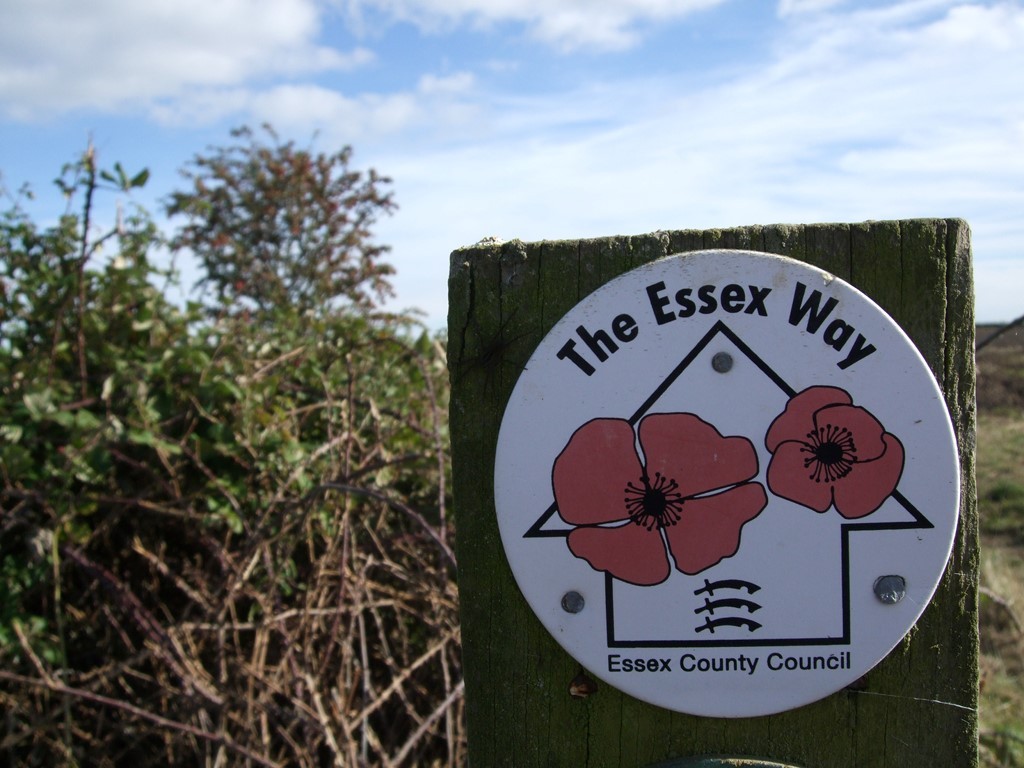
We’re only doing one full day’s walking to Harwich, cramming the 16 miles into a single Saturday. It rains all night but next morning the sun beams, the sky blue. From the hotel we pick up the well-signed path (although print out an Essex Way map and take it with you too).
It’s a surprising start through goods yard and nettles before we’re out on the fields, the mudflats beyond. Curlews peep; waders peck. Once we pass the village of Bradfield and are down on the estuary bank we can see the impressive outline of the Georgian Holbrook Royal Hospital school opposite.
The miles slip by, in blazing autumnal sun, the salty air alive with bird sound. My keen botanist father is busy spotting flora and fauna: sea purslane, cord grass, red campion, juniper, sloe berries (‘a washout this year’). We see glistening wet blackberries in Wrabness nature reserve, the odd wreck skeletal distant in the marshes. Woolly mammoth bones were found nearby, we read on a plaque; and the Stour Estuary is one of the most important in Britain for overwintering birds such as red shank, shelduck and brent geese.
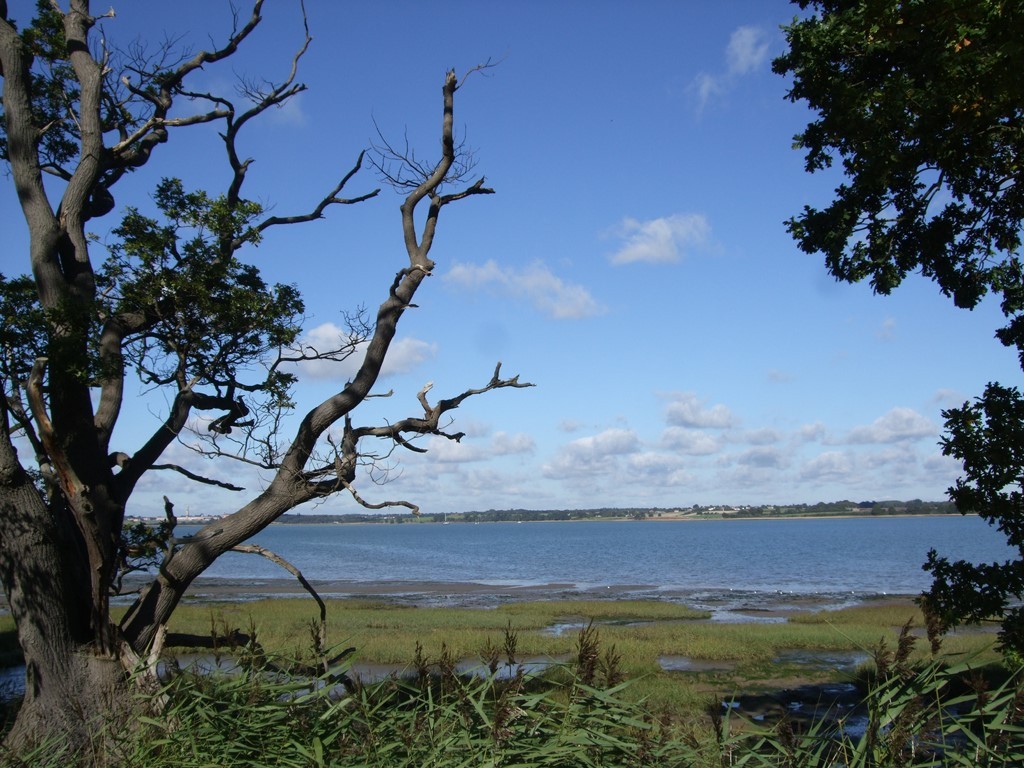
Along Copperas Bay, oaks line the mudflats, roots clinging exposed, the smell of bracken in the air. We’re now about three hours in, the perfect length of time for a pleasing rhythm to set in; for the drum of anxieties stops beating. ‘Bliss is it to be alive,’ as Derek Jarman wrote in his seminal diaries, and that’s what we feel now (hunger may, of course, be playing a part).
So a simple pub lunch at Ramsey later, where there is an attractive Victorian windmill, we weave down in burning sun to the shore, as cobwebs shimmer on the muddy field. We’re again on a bank between two dykes, one saltwater one fresh: Harwich town beach, Dovercourt Bay, looms into view, beach huts lining its long promenade. There, we spot eerie iron lighthouses built in 1863, beside which a father and son stand absolutely still, transfixed by the sun bouncing off the water.
Curling round the three mile bay, we’re finally in Old Harwich. It’s taken around six hours of walking. We ache a bit, but my dad, who is 76, is still sprightly.
Although not quite a resort, the town’s maritime connections with the continent mean a steady drip of visitors along its L-shaped Ha’penny Pier (so called because of the halfpenny toll charged when it opened in 1853), and esplanade, where pensioners sit three to a bench. There are stunning views across to Suffolk and the port of Felixstowe: the mood is very Northern European; it reminds us a little of Antwerp or Gdansk.
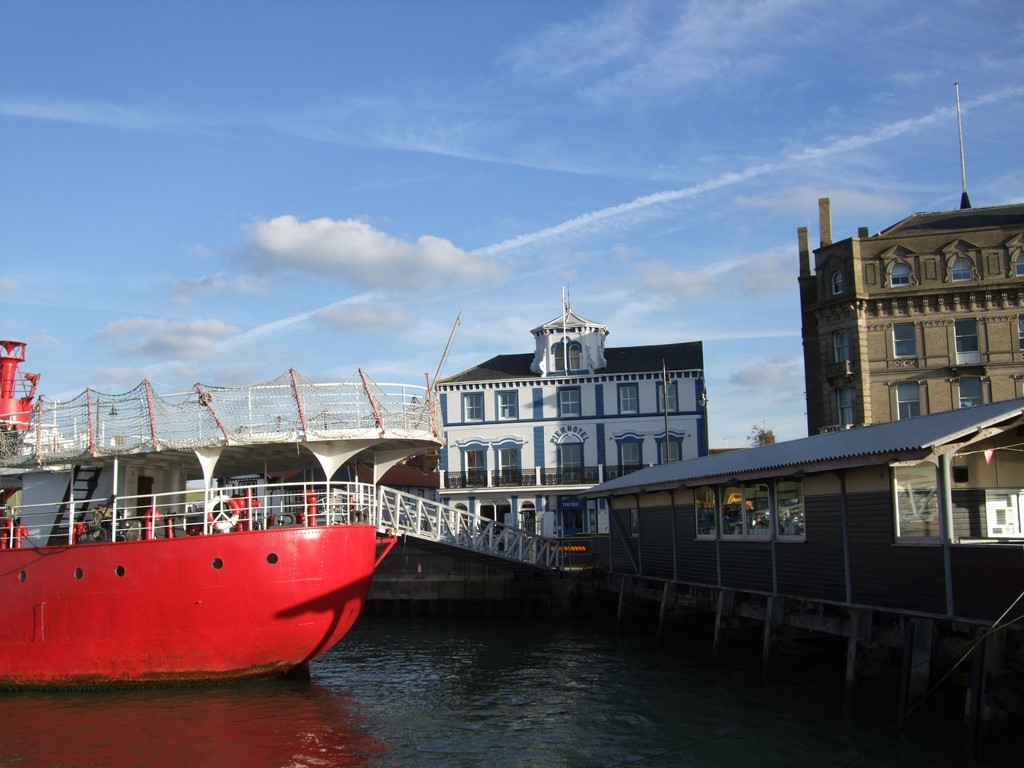
The Pier hotel (above) – built in 1852 to resemble a Venetian palazzo – is pivotal for the tourist trade, and a romantic spot: as we later that evening devour ‘Harwich-landed’ skate wing and capers in the first-floor restaurant, we glimpse a cruise ship gliding along the Stour Estuary.
Like any good English seaside town, Harwich is a forlorn but fascinating mix of eclectic architecture, well-hidden galleries, restaurants and second-hand bookshops. Before dinner wander the streets towards the Electric Palace, one of the UK’s oldest purpose-built (1911) cinemas to survive with screen, original projection room and frontage intact.
A wedding is taking place in Harwich. We sit on the harbour wall with a cold glass of wine and watch the bride and groom rush out with the photographer onto the pier as the sun sets, the glass-like water reflecting its pink-orange hue.
Excited voices, the creak of the pier, the hum of the distant international port. Finally, the sun melts behind a fishing boat.
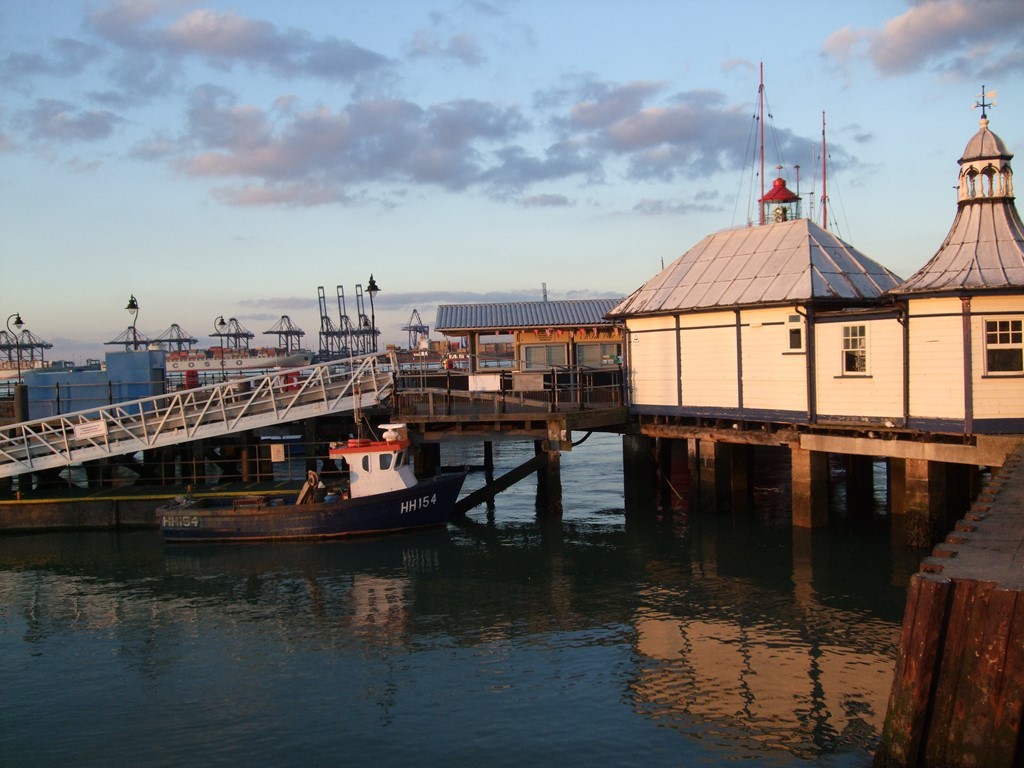
Like everything, the vision is momentary. And next morning, as we leave the hotel, dense sea mist enshrouding the whole coastline, a cold wind whipping through the ancient streets, it’s one to savour.
The Mistley Thorn, built as a coaching inn circa 1723, offers dining and accommodation opposite the River Stour. Double Room & Breakfast from £110. With Dinner £160. Call 01206 392821 or book online.
The Pier Hotel is located in two historic buildings on the quayside of old Harwich. It houses two celebrated seafood restaurants and seven second-floor bedrooms. The Pier in Harwich has double rooms from £117. Call 01255 241212 or book online.

